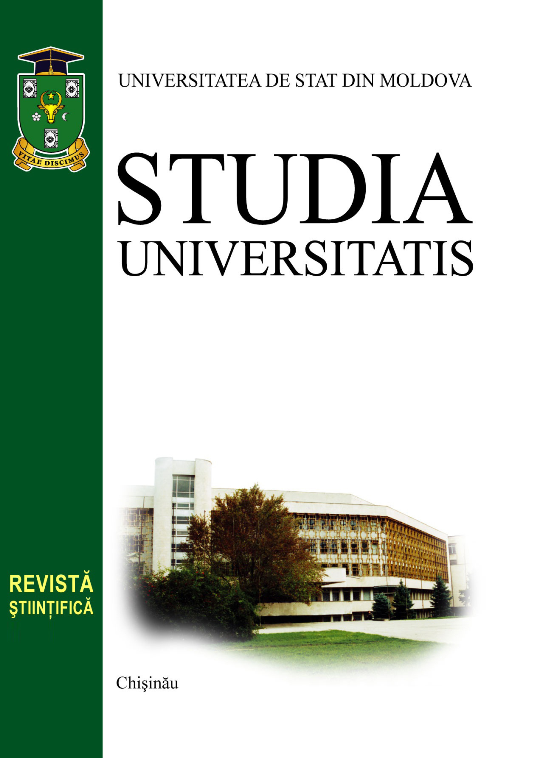SINTEZA, STRUCTURA ȘI PROPRIETĂȚILE COMPUȘILOR COORDINATIVI AI UNOR METALE 3d CU 4-(DIMETILFENIL)-TIOSEMICARBAZONE ALE 2-HIDROXI-3-METOXIBENZALDEHIDEI
Aurelian GULEA, Victor ȚAPCOV, Diana CEBOTARI, Olga GARBUZ Universitatea de Stat din Moldova
Аннотация
SYNTHESIS, SRUCTURE AND PROPERTIES OF COORDINATION COMPOUNDS OF SOME 3d METALS WITH 2-HYDROXY-3-METHOXYBENZALDEHYDE 4-(DIMETHYLPHENYL)THIOSEMICARBAZONES
Three 2-hydroxy-3-methoxybenzaldehyde 4-(dimethylphenyl)thiosemicarbazones (H2L1-3) were obtained. 47 coor-dination compounds of copper, cobalt, nickel and iron were obtained by interaction of corresponding metal salts with H2L1-3 and various amines or sulfanylamides, for which the composition was established based on the data of the elementary analysis: Cu(HL1-2)X·nH2O (X = Cl-, Br-, ClO4-, NO3-, n = 0, 4), Co(HL1-2)2X (X = Cl-, NO3-), Cu(L1-3)A (A= H2O; Im; 2,2’-Bipy; o-Phen; 3,5-Br2py; Sf1-4), Fe(HL1)2X·nH2O (X = Cl-, NO3-; n = 0, 2), Ni(L1-2)H2O și Ni(H2L1)(L1)·C2H5OH. Thiosemicarbazones H2L1-3 behave as single- or double-deprotonated mono- or tridentate ligands in the composition of synthesized complexes. Magnetochemical research showed that the copper coordination compounds have mononuclear or polynuclear structures. The synthesized cobalt and nickel compolexes are diamagnetic. Coordina-tion compounds that are described in this paper do not show antimicrobial activity against Escherichia coli, but exhibit bacteriostatic and bactericidal activity against Gram-positive microorganisms and fungi in the range 0.00006 – 1.0 mg/mL. The nature of central atom, thiosemicarabzone, amine, sulfanylamide and acid residue has an influence on the antimicrobial activity of the coordination compounds. For coordination compounds with similar composition it changes in the following way: Cu Ni ˃˃ Fe Co; H2L3 ˃ H2L2 ˃ H2L1; NO3- Br- ˃ ClO4- ˃ Cl-; 2,2’-Bpy ˃ 3,5-Br2Py ˃ Im ˃ o-Phen; Sf4 Sf3 Sf2 Sf1. These complexes exhibit antioxidant activity in the range of concentrations 10-5-10-7 mol/L and are 1.6-9 times more active than Trolox that is used in medicine as a standard for determining the antioxidant properties of natural and synthetic compounds.
Keywords: synthesis; organic compounds; coordination compounds; antimicrobial, antifungal, antioxidant, and anti-proliferative activity; minimum inhibitory concentration, IC50.


